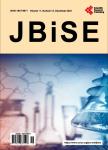Experiencing a traumatic spinal cord injury—Analysis on the view of the theory of Watson’s transpersonal caring
在 Watsons transpersonal 关心的理论的看法上经历创伤的针的绳索 injuryAnalysis作者机构:New University of LisbonLisbonPortugal Federal University of CearáFortalezaBrazil The National Council for Scientific and Technological Development(CNPq)BrasiliaBrazil Nupen/DENF/FFOE/UFCFortalezaBrazil School of NursingCardenal Herrera UniversityValenciaSpain Clinical Care Health State University of CearáFortalezaBrazil
出 版 物:《Journal of Biomedical Science and Engineering》 (生物医学工程(英文))
年 卷 期:2013年第6卷第7期
页 面:14-20页
学科分类:1002[医学-临床医学] 100214[医学-肿瘤学] 10[医学]
基 金:part of the research carried out under the Graduate Program in Nursing Department of Nursing UFC
主 题:Spinal Cord Injury Comprehensive Analysis Jean Watson’s Theory
摘 要:This is an inquiry that seeks to understand the meaning of experiencing a spinal cord injury for hospitalized Brazilian and Portuguese patients. A quailtative study was achieved in two care services to spinal cord injury in Fortaleza-Brazil and Lisboa-Portugal. The subjects were 30 patients with complete spinal cord injury. The findings were obtained through a semi-structured interview, which took place at different times and it was used the following guiding question: What does it mean for you to experience a spinal cord injury? The data were organized by Bardin technique and analysis based on the assumptions of the theory of Jean Watson’s care. The speeches of the patients show a diversity of meanings such as: to lose the freedom of going and coming, sexuality and to become dependent on others. It is concluded that this situation of loss overbalances the person’s existence, which is expressed by feelings of sadness, grief, discontent, isolation, anxiety, crying, pain and emotional suffering. These feelings were expressed by the two groups despite being from different cultures. The research enabled the description of multiple dimensions of the meaning of spinal cord injury. It fills the theoretical gap, not yet sufficiently addressed to the practice of caring people with spinal cord injury.




